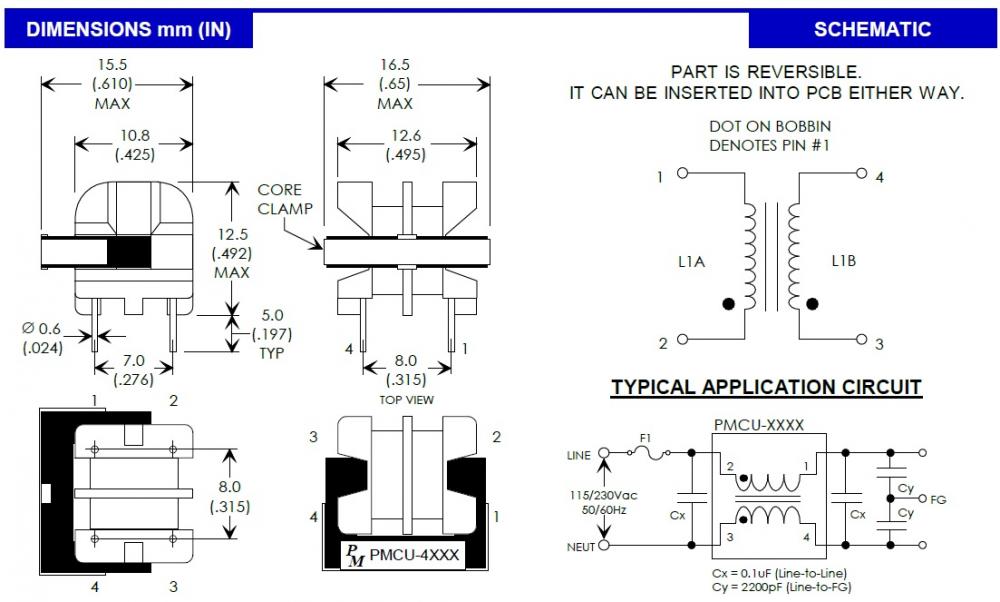Search the Community
Showing results for tags 'transformer'.
-
The core element of any electronic device is the power supply. Any instability or malfunction of the power supply causes the device to malfunction or demonstrate weird behavior. In some sensitive applications, we need a dual voltage-rail power supply to prepare a high current and low noise voltage at the output. In this article/video, I introduced a low-noise AC-to-DC power supply that can handle up to 4A continuously and accept input voltages up to 35V-AC. To design this power supply, I decided to use an enhanced capacitance multiplier circuit. I paid high attention to good grounding, assigned the top layer of the PCB to the ground, and drew power planes instead of tracks to carry high currents. As a result, I could not detect any noise or ripple at the output even at the maximum output current! The PCB board has two layers and to ensure high-quality fabricated boards, I sent the Gerber files to PCBWay. I tested the board for voltage drop, current delivery, and output noise. I used Siglent SDL1020X-E DC Load and Siglent SDS2102X Plus oscilloscope to perform all tests. I’m confident that this design satisfies your needs in many applications. Schematic + PCB + Full Detail: https://www.pcbway.com/blog/technology/Low_Noise_45V_4A_Dual_Rail_Power_Supply_Using_Enhanced_Capacitance_Multiplier_8a031b5e.html Specifications Input Voltage (max): 35V-AC Output Current: 4A Continuous Output Noise/Ripple: Very Low Output Voltage: 45V-DC (maximum safe, under no load)
-
- power supply
- low noise
- (and 5 more)
-
Whenever you hear the transformerless supply term, you initially imagine the capacitor-based solution, which means a high voltage capacitor in series with the mains line, then a bridge rectifier, a Zener diode, a filtering capacitor, and so on. Such a circuit is not just able to deliver sufficient current for many applications, also, it is not a reliable solution for the industry, although you might see such circuits in some cheap products that are designed to have a low cost. A month ago, I was repairing a washing machine mainboard. In the examination process, I realized that it is equipped with an LNK304 chip that is used in transformerless supplies. So I decided to design a circuit based on this chip to be used in your applications. The circuit contains 220VAC mains input protection, output filtering, and a regulator. To design the schematic and PCB, I used Altium Designer 22 and the SamacSys component libraries (Altium plugin). To get high-quality fabricated PCB boards, I sent the Gerbers to PCBWay and purchased original components using the componentsearchengine.com. To test the current handling and stability of the output voltage, I used the Siglent SDL1020X-E DC Load and examined the power supply output noise using the Siglent SDS2102X Plus oscilloscope. References main: https://www.pcbway.com/blog/technology/220Vac_to_5Vdc_Transformerless_Power_Supply_Using_LNK304_5b2e2d7d.html DB107G schematic symbol, PCB footprint, 3D model: https://componentsearchengine.com/part-view/DB107-G/Comchip%20Technology LNK304G schematic symbol, PCB footprint, 3D model: https://componentsearchengine.com/part-view/LNK304GN-TL/Power Integrations 78M05 schematic symbol, PCB footprint, 3D model: https://componentsearchengine.com/part-view/MC78M05CDTG/onsemi Electronic designing CAD software plugins: https://www.samacsys.com/library-loader-help Altium Designer plugin: https://www.samacsys.com/altium-designer-library-instructions Siglent SDL1020X-E DC load: https://siglentna.com/dc-electronic-load/sdl1000x/ Siglent SDS2102X Plus oscilloscope: https://www.siglenteu.com/digital-oscilloscopes/sds2000xp/
-
- power supply
- lnk304
- (and 7 more)
-
This topic is to clarify the specs of T1 transformer used in http://www.electronics-lab.com/project/power-supply-brushless-motor-drivers/ T1 is a Standard EMI/RFI Transformer for electromagnetic noise, any 15/16mm transformer with 1mH inductance will work. This transformer is used to reduce EMI/RFI noise and doesn't provide isolation from mains voltage. I am attaching here the datasheet of the transformer. pmcu.pdf

